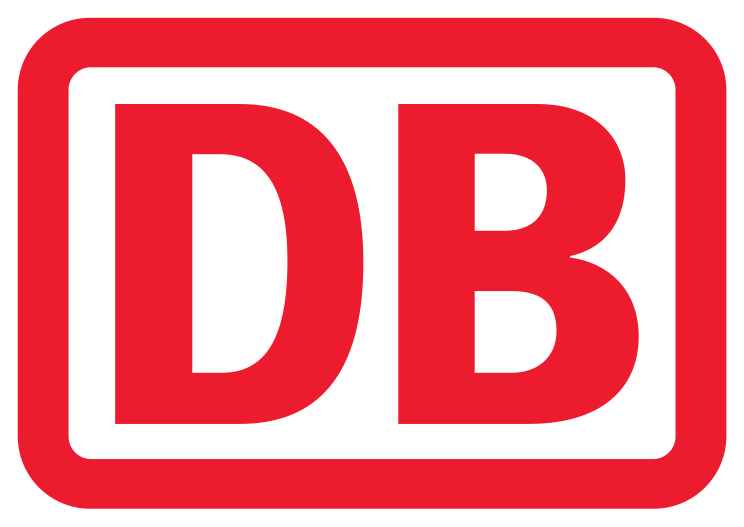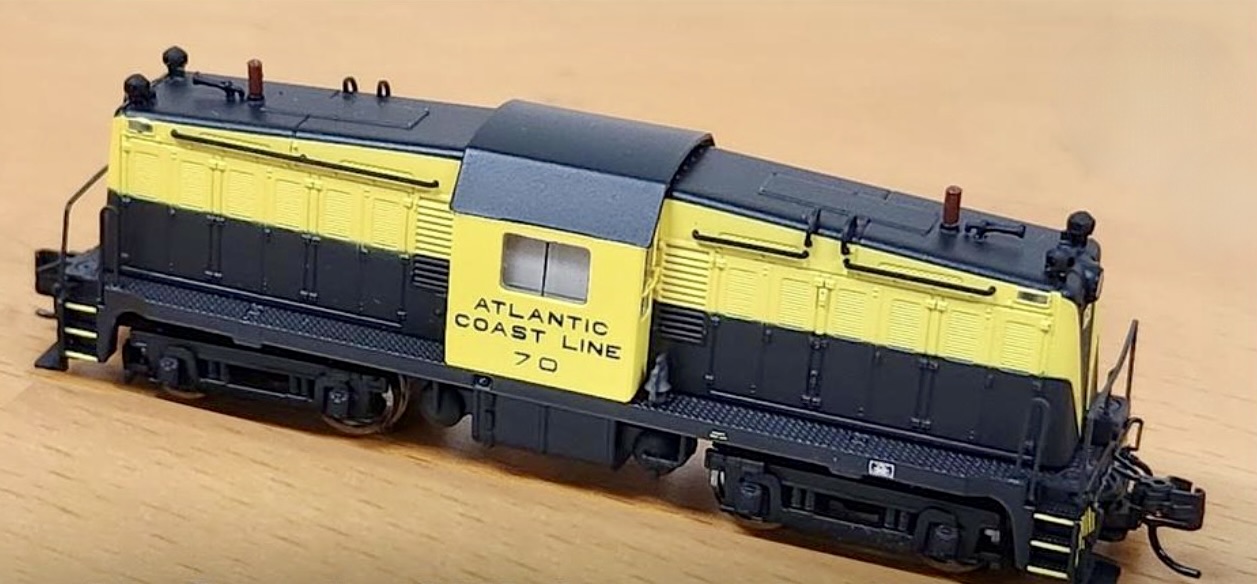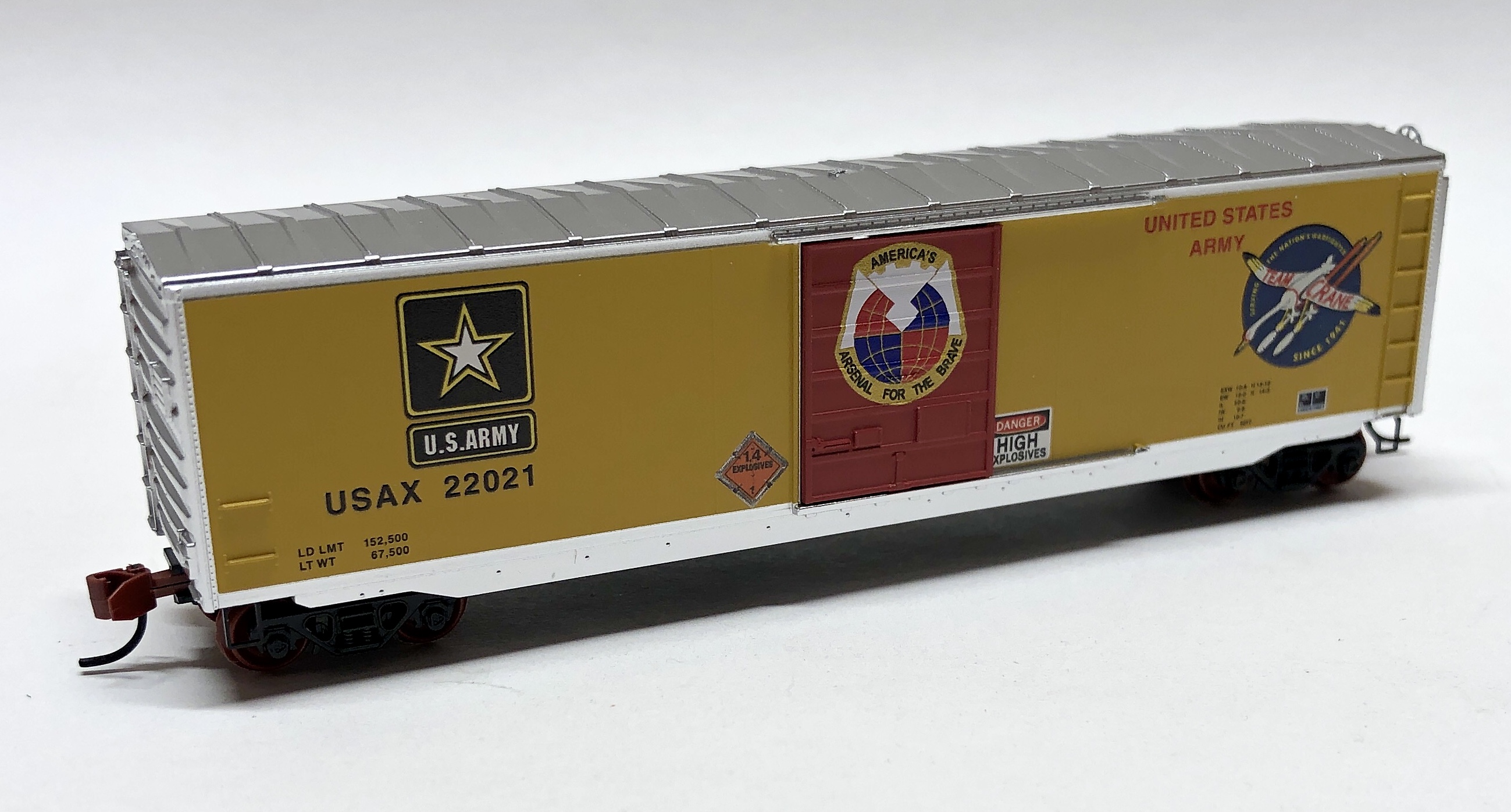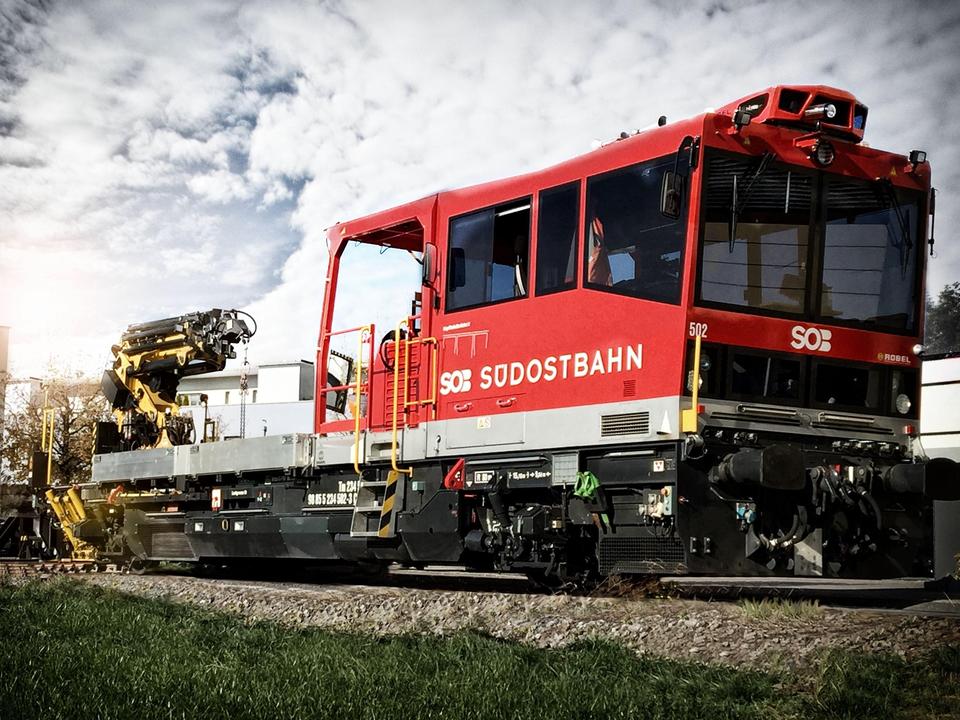Specific Item Information: Austrian Robel X630 with Stromabn. Motorized of the ÖBB
Model Information: Non-motorized or motorized (with trailer)
DCC Information: NEM 651 6-pin socket for the motorized version (with trailer)
Prototype History: Traction is the strength of the track car 54.24. Its drive concept is based on that of the track car 54.22, but differs by the use of two synchronously controlled engine-transmission units. Thus, it meets the requirements of shunting and transfer traffic and beyond all the tasks of a construction vehicle. The tracked vehicle is capable of handling high towing loads and to transport the machine, equipment and materials required at the construction site by means of a loading area and loading crane. On site, it can be used to support the work, thanks to the large number of additional accessories available. The equipment is made according to customer requirements. Thanks to different body variants, such as the use of different cranes, it meets the diverse requirements of construction sites. The combination of power for traction and flexibility in work makes the track car 54.24 a dealen and especially economical construction vehicle. The Type 54 / TM 235 is used by many railway companies in Europe, including Germany, Switzerland, Austria, Denmark and Belgium.
Drive: 2-axle-drive hydrostatically, multiple traction capable, 12-cylinder diesel engine 750 kW
Max. driving speed: 100 km/h
Weight: 45 t
Payload: approx. 5 t
Drive: 2-axle-drive hydrostatically, multiple traction capable, 12-cylinder diesel engine 750 kW
Max. driving speed: 100 km/h
Weight: 45 t
Payload: approx. 5 t
Road Name History: Deutsche Bahn AG (abbreviated as DB, DB AG or DBAG) is a German railway company. Headquartered in Berlin, it is a private joint-stock company (AG), with the Federal Republic of Germany being its single shareholder. Deutsche Bahn describes itself as the second-largest transport company in the world, after the German postal and logistics company Deutsche Post / DHL, and is the largest railway operator and infrastructure owner in Europe. It carries about two billion passengers each year.
Deutsche Bahn (literally "German Railway" in German) came into existence in 1994 as the successor to the former state railways of Germany, the Deutsche Bundesbahn ("German Federal Railway") of West Germany and the Deutsche Reichsbahn ("German Empire Railway") of East Germany. It also gained ownership of former railway assets in West Berlin held by the Verwaltung des ehemaligen Reichsbahnvermögens (Administration of the Former Reichsbahn Assets).
Deutsche Bahn (literally "German Railway" in German) came into existence in 1994 as the successor to the former state railways of Germany, the Deutsche Bundesbahn ("German Federal Railway") of West Germany and the Deutsche Reichsbahn ("German Empire Railway") of East Germany. It also gained ownership of former railway assets in West Berlin held by the Verwaltung des ehemaligen Reichsbahnvermögens (Administration of the Former Reichsbahn Assets).
Item created by: gdm on 2020-05-30 17:28:11
If you see errors or missing data in this entry, please feel free to log in and edit it. Anyone with a Gmail account can log in instantly.
If you see errors or missing data in this entry, please feel free to log in and edit it. Anyone with a Gmail account can log in instantly.











